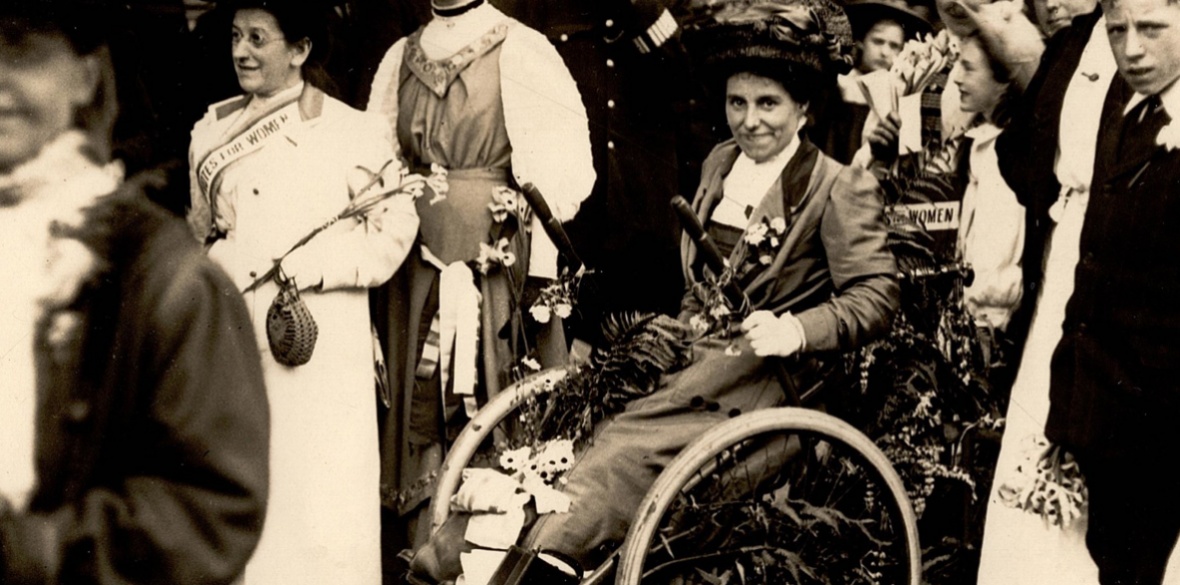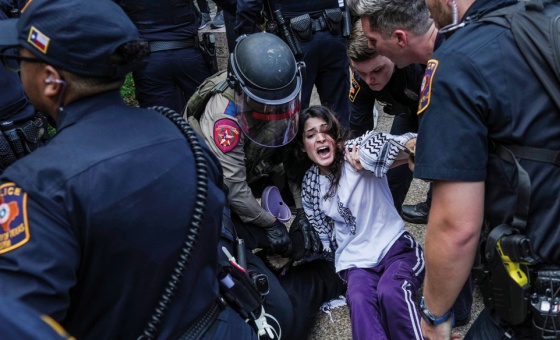This is the last article you can read this month
You can read more article this month
You can read more articles this month
Sorry your limit is up for this month
Reset on:
Please help support the Morning Star by subscribing here
REBEL Footprints is about grassroots movements for change. Celebrating outstanding and iconoclastic individuals, it highlights those who based their hopes for change on a collective
movement.
Some, such as docks-strike leader Ben Tillett, suffragette Emmeline Pankhurst, secularist and anti-war campaigner Bertrand Russell, writer and activist Eleanor Marx and Labour politician George Lansbury, are more well-known.
But readers will also meet individuals with whom they may be less familiar, such as Chartist leader William Cuffay, whose father was born into slavery in the Caribbean, sweatshop worker and anarchist campaigner Milly Witkop, suffragette Rosa May Billinghurst — who undertook courageous acts of civil disobedience from her wheelchair — and veteran East End brushmaker Mrs Savoy, who made a powerful impact on Prime Minister Herbert Asquith when they met in June 1914.
Also included are Charlie Goodman, whose anti-fascist activism took him from the charge room at Leman Street police station on the day of the Battle of Cable Street over the Pyrenees to Spain, where he joined the British Battalion, Fifteenth International Brigade.
The word “rebel” derives from the Latin rebellis, which signified a fresh declaration of war (bellum) after a defeat. Many of the rebels celebrated through the book were true to this spirit. They were resilient people, undaunted by temporary setbacks, who believed that they would ultimately triumph.
All of them challenged the status quo, some from the most marginalised and embattled starting points, while others were more comfortably ensconced within the mainstream. But their common attributes were their fervent refusal to let injustices go unchallenged, their belief that change was possible and their determination to see their battles through to a conclusion.
The book explores these people’s lives to find out what motivated and inspired them to act. It illuminates the methods they adopted and, with the aid of specially commissioned
maps and suggested routes for each chapter, invites you to walk in their footsteps.
In keeping with its “history from below” approach, Rebel Footprints particularly celebrates those movements that have been less conspicuous in mainstream narratives. Much has been written about the Chartist movement, but less about its predecessors, such as the London Corresponding Society and the National Union of the Working Classes, whose ideas and activities are outlined.
The Women’s Freedom League, whose motto was “Dare to be Free,” fought for the vote but also for equal opportunities, equal rights and equal justice for women. History records them as being less militant than Emmeline Pankhurst’s Women’s Social and Political Union but I would argue that they were more politically radical.
The Battle of Cable Street in October 1936 was an extraordinary event that dealt a severe blow to Oswald Mosley’s fascist movement. But it was one battle in a long war and the complementary actions of the people of Bermondsey, who took to the streets and built their own barricades exactly a year after the Cable Street conflagration, are described.
The book ends on the eve of the second world war, by which time the rebel Londoners and their counterparts nationwide, whose rebel footprints had mobilised, marched, petitioned, demonstrated and endured imprisonment, had chalked up several significant gains.
Fascism had been defeated domestically and within years would be defeated internationally, trade unions were an accepted part of society and the Labour Party was a mass party seeking redistribution of wealth, whose members were drawn largely from the working class.
There was free universal education and higher educational opportunities were about to expand. With very few exceptions, all female and male adults could vote, basic freedoms were guaranteed and organisations such as the National Council for Civil Liberties — now Liberty — were monitoring and challenging breaches of civil rights.
A freely speaking national press was widely read and, although ownership of newspapers was still largely concentrated in the hands of Conservative political and economic elites, newspapers such as the Daily Worker, the Daily Herald and the News Chronicle flourished and provided accessible and affordable alternatives.
The post-war Labour administration brought in further radical reform, reflecting a broad consensus in society, demanding greater fairness, democracy and equality of opportunity.
This war, in which for the second time in three decades ordinary workers had proportionally made the greatest sacrifice, was a watershed for Britain and especially for its capital city, which suffered so much damage during the Blitz.
Thousands of homes were destroyed and communities dislocated. Slum clearance and renovation of the city’s infrastructure, which had been taking place all too slowly from the end of the 19th
century, suddenly presented itself as an urgent necessity.
The economic divisions in British society and in its capital city remained conspicuous but the rebels and protesters taking to London’s streets in the 1950s and in the decades immediately
beyond could generally undertake their activities from a more comfortable and stable starting point.
Protests in London became focused on a more diverse and eclectic, though no less urgent, set of issues such as the environment, lesbian and gay rights, women’s equality, anti-racism, disability equality, nuclear disarmament, the Vietnam War, apartheid in South Africa and trade justice — all of which are much more difficult to locate specifically within the London context as opposed to its national or global counterparts.
Most of the events described in the book took place within inner London boroughs and central London areas. London grew unevenly as a city. The financial centre developed first, while its
legal and political institutions emerged to the west of the financial district.
Industry in London was founded towards the east. The development of the East India and West India docks there brought a host of related industries into existence. Gradually, the urbanisation combined with industrial development that occurred in the east was replicated across the capital.
But this meant that the demands of rebellious movements for change were first fought out and often took their most dramatic forms in east London, so five of the book's chapters and the walks that accompany them are in different parts of the East End.
Several areas south of the river underwent rapid urbanisation and industrialisation later than east London towards the end of the 19th century and the beginning of the 20th century and the two southern districts that developed particularly strong radical movements, motivated and energised by extraordinary individuals, were Battersea and Bermondsey and they are the south London areas represented in the walks.
The most central location represented is Westminster. In contrast with the east and south London districts, this was not at the heart of a local community struggle but rather the focus of a broader movement – the suffragettes – spread over several areas, that concentrated its rallies and public protests on the visible centres and symbols of political power, plentiful in Westminster.
Although the complete period the book covers ranges from the 1790s to the end of the 1930s, most chapters with their corresponding walks relate to narrower slices of time, with the Bermondsey chapter covering the 1890s to the 1930s.
The Bloomsbury chapter is the exception to the pattern. This area was a hothouse for the development of radical ideas throughout the period the book covers and that is reflected in a wide-ranging walk.
Two other important locations that the book will lead you through are Fleet Street and Clerkenwell, the focus of the first two chapters. Our story begins there.
Rebel Footprints is published by Pluto Books, price £12.99.











